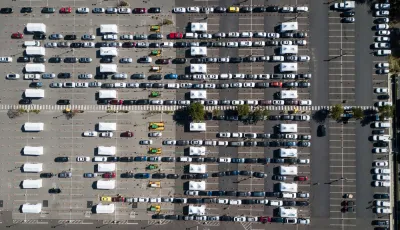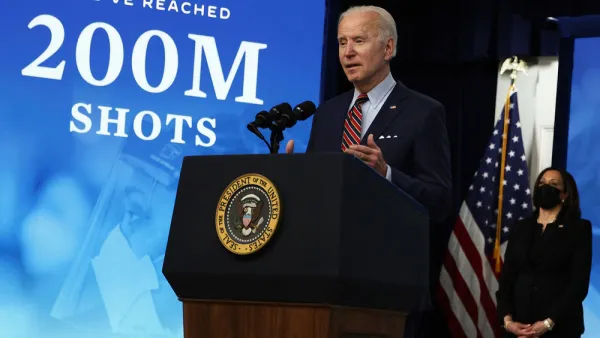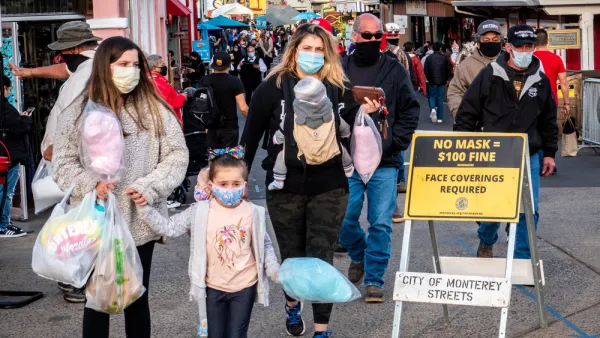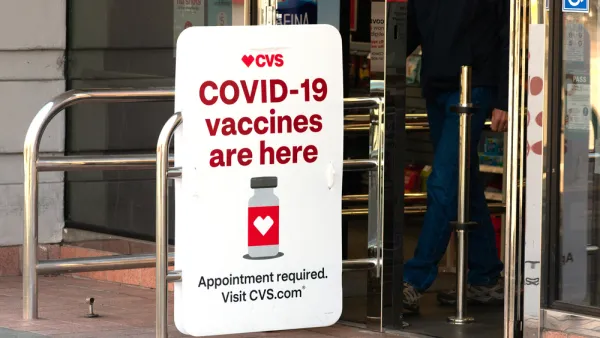Five public health experts and a pollster take issue with calling the COVID crisis a 'pandemic of the unvaccinated,' suggesting it may be inappropriate, provocative, and not only ineffective but possibly counterproductive in increasing vaccinations.

Covid-19 vaccines may arguably be the silver bullet (or merely hope) for ending the pandemic – if they are injected into the arms of eligible people.
A report from the Los Angeles County Department of Public Health posted August 24 on the Center for Disease Control and Prevention's (CDC) Morbidity and Mortality Weekly Report (MMWR) webpage found that "[o]n July 25, infection and hospitalization rates among unvaccinated persons were 4.9 and 29.2 times, respectively, those in fully vaccinated persons."
On Sept. 7, 53.2% of the U.S. population was fully vaccinated, according to the CDC. Among the eligible population, those 12 years and older, it was 62%. According to The New York Times global coronavirus tracker, 48 nations have higher vaccination levels.
As noted in a recent post, Centers for Disease Control and Preventions (CDC) Director Rochelle Walensky introduced the term, "pandemic of the unvaccinated" during the White House COVID-19 Response Team's press briefing on July 16. However, some public health experts and pollsters are beginning to question the catchphrase, reports Ricardo Alonso-Zaldivar of the Associated Press on Sept. 1.
- “It is true that the unvaccinated are the biggest driver, but we mustn’t forget that the vaccinated are part of it as well, in part because of the delta variant,” said Dr. Eric Topol, professor of molecular medicine at Scripps Research in La Jolla, California. “The pandemic clearly involves all people, not just the unvaccinated.”
Dr. Topol noted that 10% of hospitalized COVID patients in Louisiana were vaccinated. KATC News confirms what the Louisiana Department of Health coronavirus dashboard shows – 17 percent of Covid deaths from July 29 to August 4 were fully vaccinated. “We should not partition [the unvaccinated] as the exclusive problem,” Topol said.
- “We can say that the virus has reemerged in the southern United States, primarily among unvaccinated people, but it doesn’t mean we have to blame the unvaccinated,” Dr. Peter Hotez, dean of the National School of Tropical Medicine at Baylor College of Medicine in Houston, said.
An alternative way to communicate the importance of vaccination was stated by Sen. Bill Cassidy (R-La.) on ABC's This Week on Sept. 5. Host George Stephanopoulos asked the senator, who is also a physician, "Is your state finally getting COVID under control?"
"Yes. The numbers are falling down for delta," responded Cassidy. "But our immunization rates are still way too low. And our ICUs still have too many patients related to what is essentially a vaccine-preventable disease."
- Public health professor Robert Blendon called the catchphrase "just provocative." Blendon, who is also an expert on health policy and political analysis at the Harvard T.H. Chan School of Public Health, added, “The unvaccinated have an opposition toward Washington, and the more you stir the opposition, the more it convinces them ‘I’m not going to give in to those people.'"
Among the 14 groups of people that the Kaiser Family Foundation tracks in terms of the public’s attitudes and experiences with COVID-19 vaccinations, the least vaccinated are Republicans, 54%, with Democrats the highest at 86%, according to their COVID-19 Vaccine Monitor dashboard on Sept. 8
- “Calling it a ‘pandemic of the unvaccinated’ is certainly not going to increase the compliance among the unvaccinated," Republican pollster Bill McInturff told the Associated Press.
- “Stating it’s a pandemic of the unvaccinated implies that if you are vaccinated, you are protected, and you should not care about those who are unvaccinated, and how that may impact you,” said Dr. Leana Wen, a nonresident senior fellow at the Brookings Institution’s Metropolitan Policy Program who has been critical of both Trump and Biden administration coronavirus policies (see two related posts.)
“That is not the case. The more infection there is around, the more likely you are to contract COVID and spread it to others, even if you are vaccinated.”
Dr. Celine Gounder, an infectious disease specialist and epidemiologist at New York University's Grossman School of Medicine, illustrated the importance of transmission rates during an appearance on the PBS NewsHour on Sept. 6.
"In South Carolina, for example, which has some of the highest rates of transmission in the country, if you're vaccinated, your risk of getting COVID are equivalent to somebody who is not vaccinated here in New York state. And that is simply because there is so much more virus circulating right now in South Carolina that, even with the protection of the vaccine, you could still get infected."
According to the Covid Act Now database on Sept. 7, South Carolina had the nation's highest case incidence, 107 daily new cases per 100,000 people and New York the 46th highest, with 24 per 100k. The national daily average is 46 per 100k, according to The New York Times tracker on Sept. 8.
Public polling
Public health professionals and pollsters are not alone in questioning how the administration articulates its pandemic response. Gallup reports on Sept. 7 that "[m]ore Americans now disagree (41%) than agree (32%) that the Centers for Disease Control and Prevention (CDC) has communicated a clear plan of action in response to the COVID-19 situation."
The poll also finds Americans divided in their views of whether President Joe Biden is communicating clearly in regard to the coronavirus response -- 40% agree that he has, and 42% disagree.
Related in Planetizen:
- The Vaccinated Account for 20 Percent of Covid Infections in a Few Hot Spots, August 17, 2021
- Vaccinated Californians Estimated to Account for 20% of Current COVID Infections, August 12, 2021
- Prolonging the Pandemic: A Public Health Expert Faults the Biden Administration, July 12, 2021
- Pandemic Paradox: World's Most Vaccinated Country Also the Most Infected, May 14, 2021
FULL STORY: Questioning a catchphrase: ‘Pandemic of the unvaccinated'

National Parks Layoffs Will Cause Communities to Lose Billions
Thousands of essential park workers were laid off this week, just before the busy spring break season.

Retro-silient?: America’s First “Eco-burb,” The Woodlands Turns 50
A master-planned community north of Houston offers lessons on green infrastructure and resilient design, but falls short of its founder’s lofty affordability and walkability goals.

Delivering for America Plan Will Downgrade Mail Service in at Least 49.5 Percent of Zip Codes
Republican and Democrat lawmakers criticize the plan for its disproportionate negative impact on rural communities.

Test News Post 1
This is a summary

Test News Headline 46
Test for the image on the front page.

Balancing Bombs and Butterflies: How the National Guard Protects a Rare Species
The National Guard at Fort Indiantown Gap uses GIS technology and land management strategies to balance military training with conservation efforts, ensuring the survival of the rare eastern regal fritillary butterfly.
Urban Design for Planners 1: Software Tools
This six-course series explores essential urban design concepts using open source software and equips planners with the tools they need to participate fully in the urban design process.
Planning for Universal Design
Learn the tools for implementing Universal Design in planning regulations.
EMC Planning Group, Inc.
Planetizen
Planetizen
Mpact (formerly Rail~Volution)
Great Falls Development Authority, Inc.
HUDs Office of Policy Development and Research
NYU Wagner Graduate School of Public Service





























